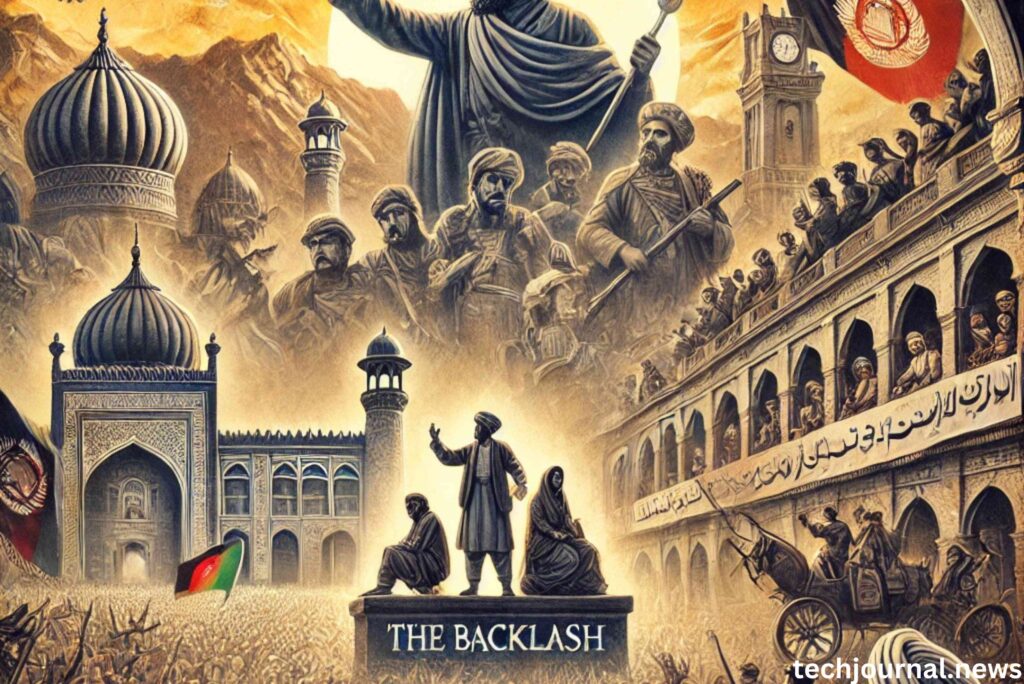Introduction of Amanollah Sharaf
Amanollah Sharaf often surfaces in discussions about Afghanistan’s struggle for modernity and sovereignty. While the exact term may stem from linguistic variations or cultural honorifics, it is widely associated with King Amanullah Khan (1892–1960), the trailblazing ruler whose audacious reforms reshaped his nation’s trajectory. Known in some texts as Amanollah (Persian for “protected by God”) and occasionally paired with Sharaf (“honor”), his reign (1919–1929) remains a defining era of ambition, controversy, and transformation.
This blog post revisits Amanullah Khan’s legacy, exploring his triumphs, tribulations, and enduring influence, while addressing frequently asked questions to dispel myths and clarify his historical significance.
AmanollahSharaf: The Man Behind the Name
Amanullah Khan, sometimes stylized as AmanollahSharaf, was Afghanistan’s first post-independence monarch. Crowned in 1919 after the Third Anglo-Afghan War, he inherited a fragmented, feudal society under British influence. His reign was marked by a zeal to modernize Afghanistan through sweeping reforms—earning him admiration as a visionary and criticism as a disruptor of tradition.
The Dawn of Afghan Independence
Amanullah’s rise began with a bold declaration of sovereignty. In 1919, he rejected British control, leveraging diplomatic and military tactics to secure Afghanistan’s independence via the Treaty of Rawalpindi. This victory cemented his reputation as a nationalist hero and set the stage for his transformative agenda.
The Reforms: Bridging Tradition and Modernity
Amanullah’s reforms targeted nearly every facet of Afghan society:
- Political and Legal Revolution
- Constitution of 1923: Afghanistan’s first secular constitution abolished absolute monarchy, established a parliamentary framework, and codified civil rights.
- Judicial Overhaul: Replaced tribal and religious courts with a centralized legal system, reducing the clergy’s influence.
- Education and Gender Equality
- Schools for All: Founded over 300 secular schools, including the first girls’ school, Masturat, in Kabul.
- Women’s Liberation: Outlawed forced marriages, encouraged women to unveil, and promoted their participation in public roles (e.g., Queen Soraya’s visible leadership).
- Infrastructure and Economy
- Urban Development: Built roads, hospitals, and Kabul’s first electricity grid.
- Currency and Trade: Introduced the Afghan rupee and established trade ties with Europe and Asia to reduce dependency on British India.
- Cultural Modernization
- Western Influences: Encouraged European attire for officials and adopted Gregorian calendar reforms.
- Anti-Tribal Policies: Restricted the power of tribal chiefs, aiming to centralize governance.
The Backlash: Why Did Amanullah’s Vision Fail?

Amanullah’s reforms, though progressive, clashed with Afghanistan’s conservative ethos. Key missteps included:
- Pace of Change: Rapid modernization alienated rural and religious communities.
- European Tour (1927–28): His lavish trips to Europe, where he met leaders like Mussolini and King George V, fueled perceptions of extravagance and disconnect.
- Forced Westernization: Mandating European clothing and education sparked accusations of abandoning Islamic values.
By 1928, tribal revolts erupted. HabibullahKalakani, a Tajik leader, capitalized on discontent, seizing Kabul in 1929. Amanullah abdicated and fled to Italy, where he lived in exile until his death.
Legacy: Seeds of a Modern Afghanistan
Though Amanullah’s reforms were rolled back after his exile, his ideals endured:
- Inspiration for Future Leaders: King Zahir Shah (1933–1973) revived secular education and women’s rights, building on Amanullah’s groundwork.
- Symbol of Sovereignty: His defiance against colonialism remains a touchstone for Afghan nationalism.
- Cultural Memory: Monuments in Kabul and Jalalabad honor his contributions, while historians debate his legacy as either a “hero” or “idealist out of touch.”
FAQs:
1. Is “AmanollahSharaf” a different person from Amanullah Khan?
No. The variation arises from Persian/Arabic transliteration. “Amanollah” is the Dari version of “Amanullah,” while “Sharaf” (شرف) is an honorific meaning “dignity” or “honor,” possibly added regionally.
2. Why did Amanullah prioritize women’s rights?
Influenced by Turkey’s Atatürk and Iran’s Reza Shah, he saw women’s empowerment as key to national progress. Queen Soraya, his wife, was a vocal advocate.
3. Did Amanullah’s reforms have public support?
Urban elites and intellectuals backed him, but rural majority—bound by tribal and religious norms—resisted. His policies lacked grassroots engagement.
4. How did his exile impact Afghanistan?
His departure triggered a decade of instability. Subsequent leaders slowed reforms to avoid backlash, delaying modernization.
5. Are there parallels between Amanullah and modern Afghan reformers?
Yes. Figures like former President Ashraf Ghani echoed his push for centralization and education, facing similar resistance from traditionalists.
6. What lessons does Amanullah’s reign offer today?
His story underscores the tension between rapid modernization and cultural preservation—a challenge still relevant in Afghanistan.
7.Was Amanullah truly “anti-Islam”?
No. He sought to separate religion from state affairs but maintained Islam as the national religion. Critics conflated secularism with anti-Islam sentiment.
AmanollahSharaf in Modern Discourse
Today, Amanullah Khan’s legacy is polarized. To some, he represents courage and foresight; to others, a cautionary tale of reform without consensus. Yet his vision of a sovereign, educated, and egalitarian Afghanistan continues to inspire debates about the nation’s future.

